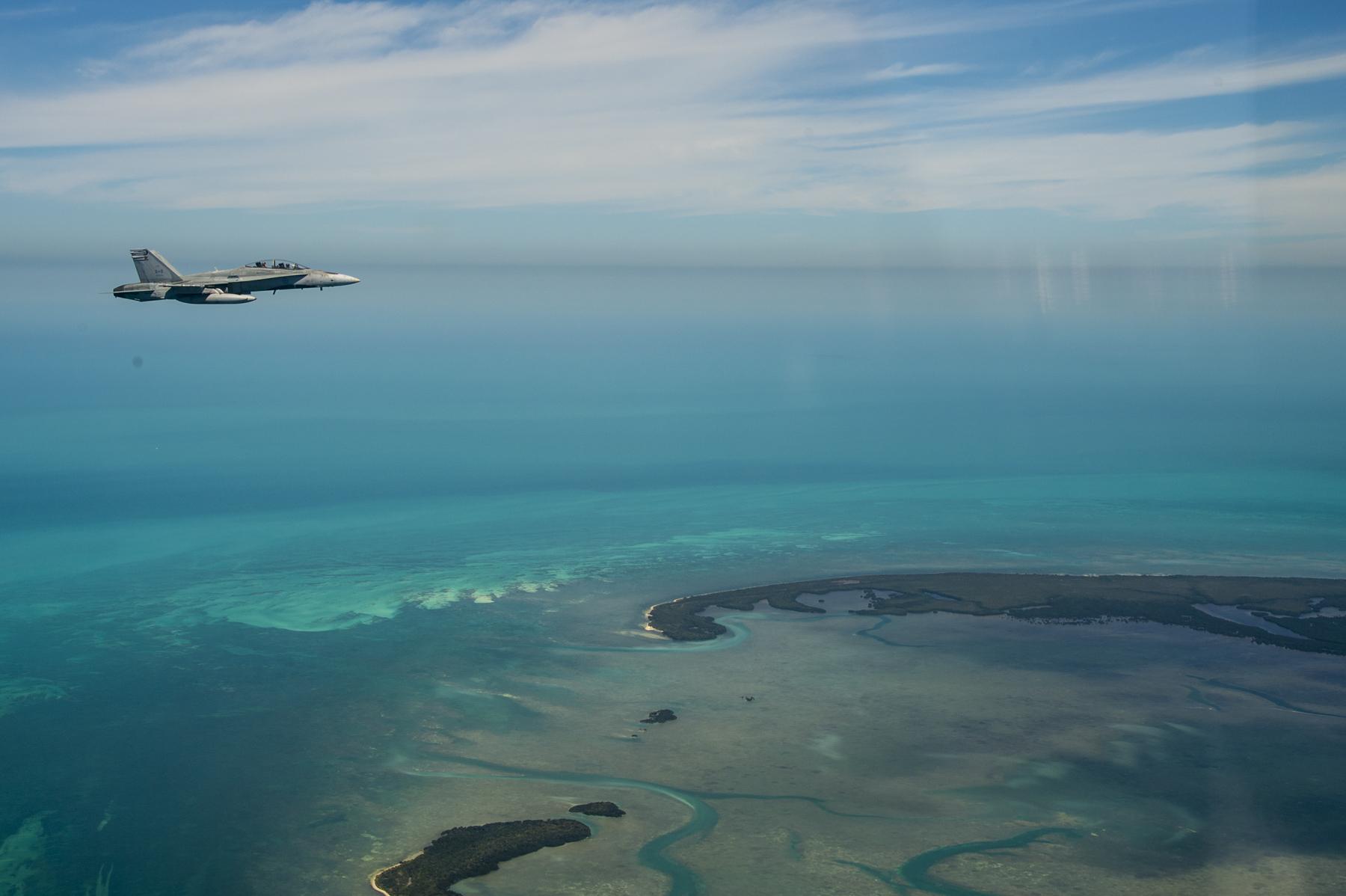Royal Canadian Air Force (RCAF) crews, support personnel and technicians deployed to Exercise Puma Strike at Naval Air Station Key West, Florida, on February 28, 2016.
Actual training for the exercise is taking place between February 28 and March 23, 2016.
Twice a year, 410 Tactical Fighter (Operational Training) Squadron, alongside various elements of 4 Wing Cold Lake, Alberta, and the RCAF, deploy to locations in the southern United States to conduct warm-weather training exercises.
“This deployment is a vital piece to the overall readiness and force generation of the RCAF’s Fighter Force capability,” said Major-General Dave Wheeler, commander of 1 Canadian Air Division. “It allows us to bring together our fighter jet and air-to-air refueling capabilities to conduct intensive training with our Allies in a deployed environment.”
 |
| 8 RCAF CF-18's and an RCAF CC-130T Herculese Tanker fly over waters of Florida during Exercise PUMA STRIKE, being held at Naval Air Station Key West, Florida between February 23 and March 25, 2016. Photo: Captain Denis Beaulieu, pilot, 410 Tactical Fighter (Operational Training) Squadron |
This edition of Exercise Puma Strike includes pilots, crews and technicians from 410 Squadron, 401 and 409 Tactical Fighter Squadrons along with 21 CF-18 Fighters;, students from 10 Field Technical Training Squadron, and air weapons controllers from 42 Radar Squadron, in addition to some support personnel from other 4 Wing and Canadian Forces Base Cold Lake units.
The exercise also includes a CC-130T Hercules air-to-air refueller based out of 17 Wing Winnipeg, Manitoba.
“Training deployments like Exercise Puma Strike enable us to succeed at our mission by exercising the planning, deployment, employment and re-deployment phases of an operation at a new operating location and in a new environment,” said Colonel Eric Kenny, commander of 4 Wing Cold Lake.
The training received on the exercise will prepare RCAF pilots, crews and technicians for real-world operations, all in a setting where consistent flying operations can take place. Although training and operations are still conducted year-round in Cold Lake, multiple days of low cloud, poor visibility and reduced runway surface conditions have the tendency to impact training timelines. For the fighter force, it could take several months to achieve the same level of training that Puma Strike will accomplish in just over a month.
Over the years, these types of southern training exercises have evolved based on the needs of participants. For larger versions, such as this particular iteration, it takes a large contingent of personnel coming together to make it happen. “We have deployed personnel from most of our units at 4 Wing to ensure that everyone receives appropriate training to function as a team and to maximize the training opportunity,” said Colonel Kenny.
“The logistical elements of deploying such a large contingent of personnel, equipment and aircraft for a three to four week exercise should not be understated,” he added, further underscoring the importance of training in a deployed environment. “I couldn’t be happier with the way the exercise is unfolding, and I’m extremely proud of our dedicated members.”
The exercise also includes a CC-130T Hercules air-to-air refueller based out of 17 Wing Winnipeg, Manitoba.
“Training deployments like Exercise Puma Strike enable us to succeed at our mission by exercising the planning, deployment, employment and re-deployment phases of an operation at a new operating location and in a new environment,” said Colonel Eric Kenny, commander of 4 Wing Cold Lake.
The training received on the exercise will prepare RCAF pilots, crews and technicians for real-world operations, all in a setting where consistent flying operations can take place. Although training and operations are still conducted year-round in Cold Lake, multiple days of low cloud, poor visibility and reduced runway surface conditions have the tendency to impact training timelines. For the fighter force, it could take several months to achieve the same level of training that Puma Strike will accomplish in just over a month.
Over the years, these types of southern training exercises have evolved based on the needs of participants. For larger versions, such as this particular iteration, it takes a large contingent of personnel coming together to make it happen. “We have deployed personnel from most of our units at 4 Wing to ensure that everyone receives appropriate training to function as a team and to maximize the training opportunity,” said Colonel Kenny.
 |
| An RCAF CF-18 flies over islands off the Florida Coast as part of EX PUMA STRIKE. Photo: DND - Corporal Andre Maillet |
No comments:
Post a Comment